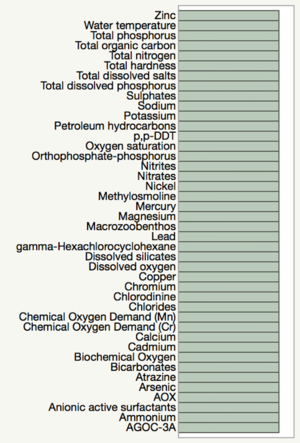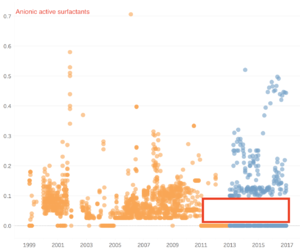Difference between revisions of "ISSS608 2017-18 T3 Assign Song Xuejing Data Preparation"
Xjsong.2017 (talk | contribs) |
Xjsong.2017 (talk | contribs) |
||
| Line 10: | Line 10: | ||
| style="font-family: Georgia; font-size:100%; solid #1B338F; background:#838383; text-align:center;" width="20%" | | | style="font-family: Georgia; font-size:100%; solid #1B338F; background:#838383; text-align:center;" width="20%" | | ||
; | ; | ||
| − | [[ISSS608_2017-18_T3_Assign_Song_Xuejing_Data_Preparation|<b><font size="2"><font color="#FFFFFF">Methodology</font></font></b>]] | + | [[ISSS608_2017-18_T3_Assign_Song_Xuejing_Data_Preparation|<b><font size="2"><font color="#FFFFFF">Methodology & Answer</font></font></b>]] |
| style="font-family: Georgia; font-size:100%; solid #1B338F; background:#8d8d8d; text-align:center;" width="20%" | | | style="font-family: Georgia; font-size:100%; solid #1B338F; background:#8d8d8d; text-align:center;" width="20%" | | ||
| Line 27: | Line 27: | ||
<br/> | <br/> | ||
| + | ==<font size="5"><font color="#f75b47" face=" Georgia">'''Data Preparation'''</font></font>== | ||
| − | <font size="3.5"><font face="Georgia" color="#000000"> | + | <font size="3.5"><font face=" Georgia" color="#000000">We have two dataset which include the chemical units of measure and Boonsong Lekagul waterways readings. There are 106 different chemical measurements of the water, some of them are chemicals that will damage the water, which may possible output by the furniture factory, and some of the chemicals are just minerals such as iron and zinc. Also, these samples were randomly taken from 1998 to 2016. Therefore, firstly, we need to filter out all the chemicals that we need. |
| − | |||
| + | We should use chemicals have enough data points at least in recent years, because we need to identify that the water quality has been bad since the furniture factory has been build. If the chemical is no longer measured anymore, there is no point to identify the changes of the water quality. After first round of filtering, we have these chemicals remaining, only these chemicals have data till 2016. | ||
| + | [[Image:Song1.png|300px|center]] | ||
| + | </font></font> | ||
| − | + | ==<font size="5"><font color="#f75b47" face=" Georgia">'''Question 1'''</font></font>== | |
| − | ==<font size="5"><font color="#f75b47" face=" Georgia">''' | ||
| − | |||
| − | |||
| − | |||
| − | |||
| − | |||
| − | |||
| − | |||
| − | |||
| − | |||
| − | |||
<font size="3.5"><font face=" Georgia" color="#000000"> | <font size="3.5"><font face=" Georgia" color="#000000"> | ||
| − | + | After filtering out all the unnecessary chemicals, we can take a look at the overview of all the chemicals in different places one by one. For question1, we need to characterize the past and most recent situation with respect to chemical contamination in the Boonsong Lekagul waterways. Because we don’t know which year the factory was build, we define the recent as data point after 2013, and the past as data points before 2013, in order to see if there is any trend of some chemical measurements. | |
| − | + | After going through all the chemicals, we have found three apparent type of trends. First, the value of some chemicals increased from past to recent years. Including chemicals as below. | |
| − | |||
| − | + | [[Image:q1.1.png|300px|center]] | |
| + | </font></font> | ||
Revision as of 01:55, 8 July 2018
VAST Challenge 2018: Suspense at the Wildlife Preserve
Mini Challenge 2 - Like a duck to water
|
|
|
|
|
|
Data Preparation
We have two dataset which include the chemical units of measure and Boonsong Lekagul waterways readings. There are 106 different chemical measurements of the water, some of them are chemicals that will damage the water, which may possible output by the furniture factory, and some of the chemicals are just minerals such as iron and zinc. Also, these samples were randomly taken from 1998 to 2016. Therefore, firstly, we need to filter out all the chemicals that we need.
We should use chemicals have enough data points at least in recent years, because we need to identify that the water quality has been bad since the furniture factory has been build. If the chemical is no longer measured anymore, there is no point to identify the changes of the water quality. After first round of filtering, we have these chemicals remaining, only these chemicals have data till 2016.
Question 1
After filtering out all the unnecessary chemicals, we can take a look at the overview of all the chemicals in different places one by one. For question1, we need to characterize the past and most recent situation with respect to chemical contamination in the Boonsong Lekagul waterways. Because we don’t know which year the factory was build, we define the recent as data point after 2013, and the past as data points before 2013, in order to see if there is any trend of some chemical measurements. After going through all the chemicals, we have found three apparent type of trends. First, the value of some chemicals increased from past to recent years. Including chemicals as below.

